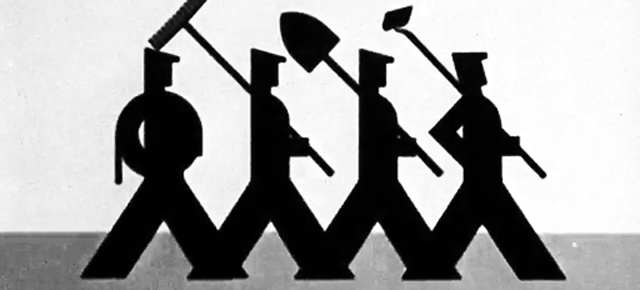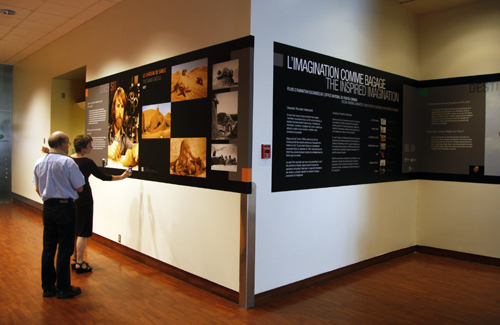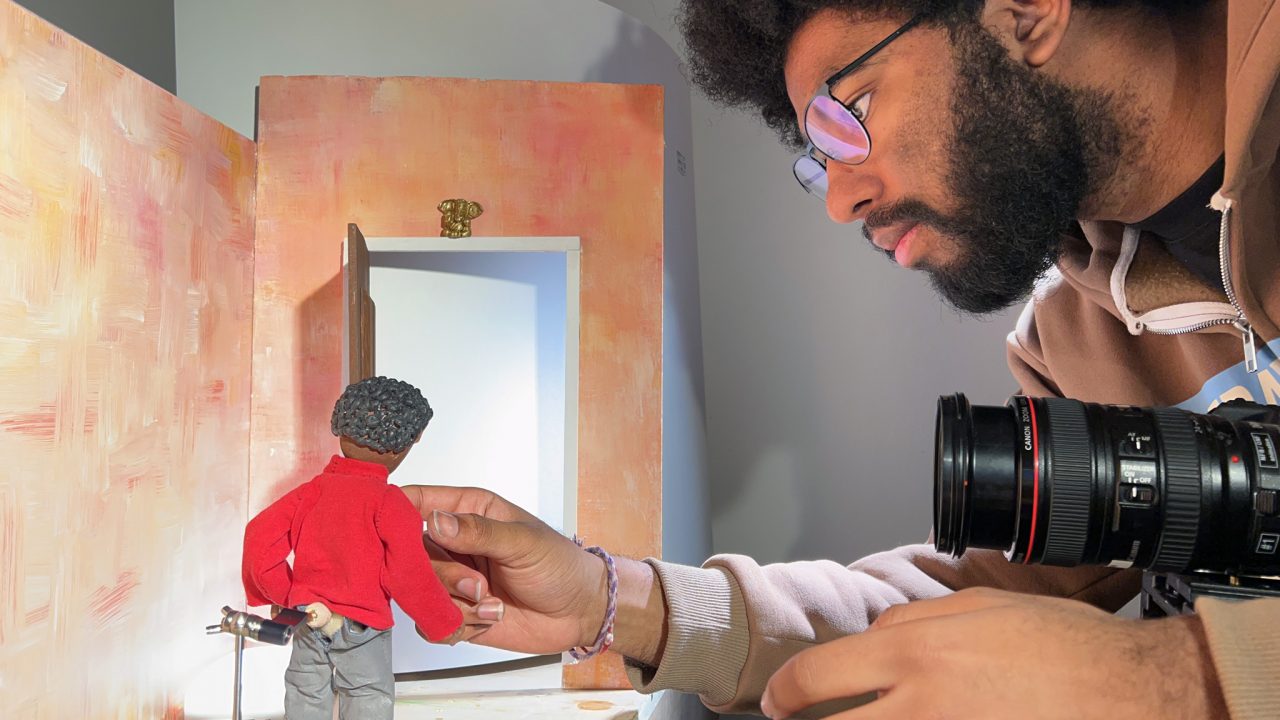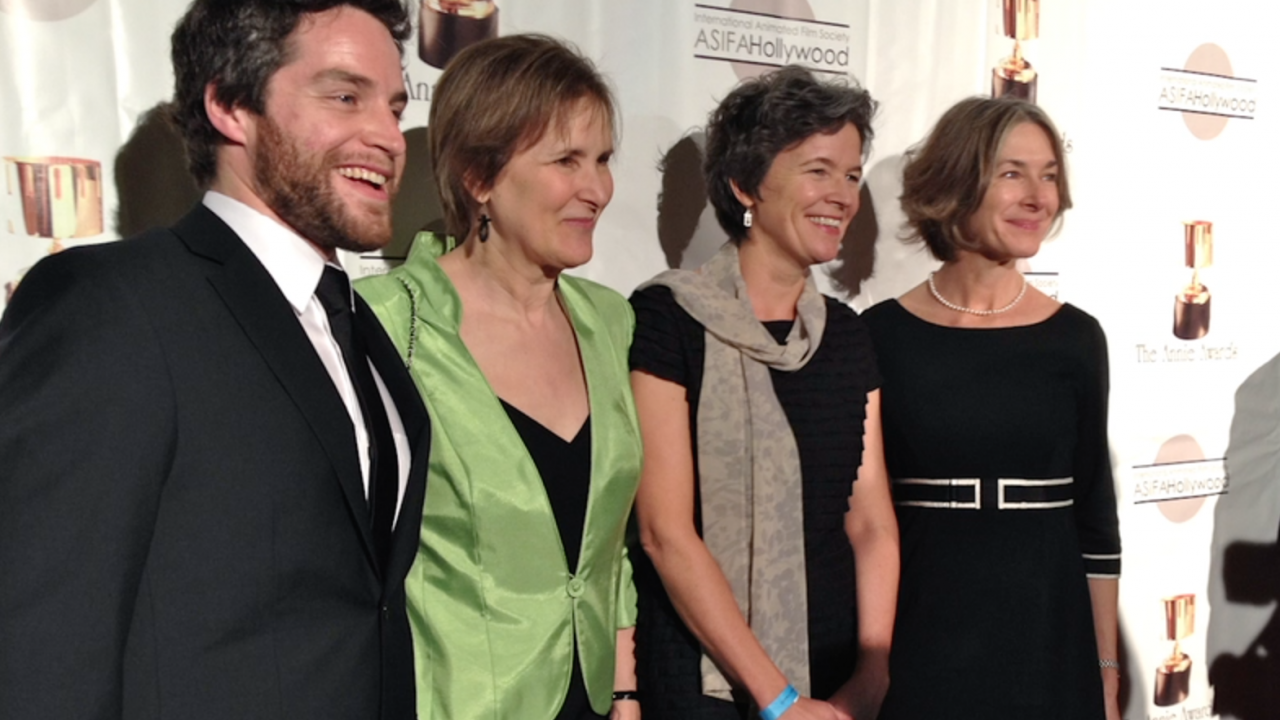
70 Years of Animation, Part 1 – When Animation Marches Off to War
70 Years of Animation, Part 1 – When Animation Marches Off to War
*This post is a translation from French. You can see the original post here.
Since September 2011, the National Film Board of Canada and the Aéroports de Montréal are presenting an exhibition of photographs drawn from the NFB’s 7 Oscar-crowned animated films. Pierre Elliott Trudeau International Airport will showcase L’imagination comme bagage / The Inspired Imagination for an entire year as part of its Aérogalerie program. As this exhibition is also a salute to 70 years of animation at the NFB, I am taking this opportunity to look back on the history of animation at the Film Board.


May 2, 1939, marks the official creation of the NFB and its mandate: “to interpret Canada to Canadians”—a mandate that underwent a sudden transformation when war broke out in September of the same year. The NFB’s task then became to raise public awareness of Canada’s war effort and, above all, to encourage Canadians to take part. Expertly led by John Grierson, Scottish filmmaker, producer and father of the British documentary movement, the NFB began producing and distributing propaganda documentaries destined for movie theatres in Canada and abroad. Although Grierson was convinced that documentaries were the most effective vehicles to convey messages that could reach the general public, the campaigns urging Canadians to buy Victory War Bonds that were meant to finance the war effort would see the emergence of a new film genre at the NFB: animation.
The first campaigns in February and September 1940, organized by the Bank of Canada, were a resounding success, despite a rather low-key approach: door-to-door was the favoured method of reaching the public, in addition to advertising by banks and post offices. However, in 1941, seeing that the war was dragging on, and taking stock of its meagre financial resources, the Canadian government decided to go about finding new ways of getting its message across. It created the National War Finance Committee as well as a whole series of small grassroots financing committees all across the country, known as War Savings Committees. It broadened its advertising campaigns through the production of posters and radio, newspaper and magazine ads. The use of film was also a major promotion tool. This is where the NFB comes in.
The NFB had no animation studio as yet. Grierson had wanted to build one as soon as he had arrived, but in the first 2 years of his mandate, he had his hands full with 2 series of documentary propaganda films for movie theatres (Canada Carries On and World in Action) and contract talks with Columbia Pictures and United Artists for Canadian and US distribution respectively. All this in addition to behind-the-scenes manoeuvring at the Department of Trade, which stubbornly clung to ownership of 2 public film producers—the NFB and the Canadian Government Motion Picture Bureau (CGMPB). When the National War Finance Committee approached the NFB for its campaigns in July 1941, it proved to be a good time to begin work in animation, especially since the thorny issue of the CGMPB had been settled. As of June 19, 1941, the NFB had become the Canadian government’s sole remaining producer and distributor.
On July 2, 1941, National War Finance Committee board members and the NFB held their first meeting in Ottawa. Instead of supplying films produced by the institution he headed, Grierson suggested reaching a co-production agreement with the Disney studio, which already enjoyed a prestigious reputation and was widely known to the general public. In addition, the studio provided speedy and reliable delivery—the campaign launch date was December 1941. The committee agreed and Disney made 4 films, each 3-4 four minutes long, and featuring several of its characters plugging Victory War Bonds. The total cost amounted to $20,000, which, at that time, represented a significant outlay.
Despite a few delays in delivery, the first film, The Thrifty Pig, opened in November 1941. The 3 little pigs are shown facing a wolf wearing a swastika. The straw and wood houses cannot resist the Nazi wolf’s forceful gusts of air, but the house built of Victory War Bonds remains standing. The message couldn’t be any clearer: when you buy Victory War Bonds, you are helping to protect your country against the Nazi menace. One month later, the Seven Wise Dwarfs opened, featuring the seven dwarfs leaving their mines to buy Victory War Bonds. In January 1942, All Together showcased a number of Disney characters holding a demonstration on Parliament Hill in favour of buying Victory War Bonds. The last film, Donald’s Decision, also opened in 1942. The famous duck is wondering whether he should follow his good conscience, which tells him to buy Victory War Bonds, or its evil twin, which tells him to hold on to his money. More than 100 copies of each film were shown in theatres all over Canada and Great Britain and then incorporated into the non-commercial distribution channels. The NFB obtained the distribution rights to the 4 films for a 5-year period. At war’s end in 1945, the film rights were never renewed and, unfortunately, these films are no longer available today.
To fulfil the terms of his agreement with the National War Finance Committee, Grierson also called in Philip Ragan, an animation filmmaker from Philadelphia who specialized in cartoon animation. Between 1941 and 1945, Ragan would go on to produce around 30 films for the NFB featuring the Plugger family, who explained how the public could participate in the war effort, with emphasis on buying Victory War Bonds.
He Plants for Victory, by Philip Ragan
He Plants for Victory, , provided by the National Film Board of Canada
Empty Rooms Mean Idle Machines, by Philip Ragan
Empty Rooms Mean Idle Machines, , provided by the National Film Board of Canada
Although Disney produced a 5th film, Stop That Tank!—a training film for the Department of National Defence—in 1942, the NFB’s collaboration with the American giant quickly came to a halt. Grierson had already begun thinking about a new plan: attracting an immensely talented filmmaker whom he had discovered in his native Glasgow, in the early 1930s. This filmmaker was Norman McLaren. You can read all about him in Part 2.




The original Frontier Airlines began operations at Denver
FYI – Disney, about ten years ago, released “On the Front Lines”, which included many of their propaganda films from the Second World War on a two DVD set. Included in this release were some of the NFB films, such as The Thrifty Pig and Seven Wise Dwarfs. I’m pretty sure there were also some Canadian Armed Forces Training Videos.